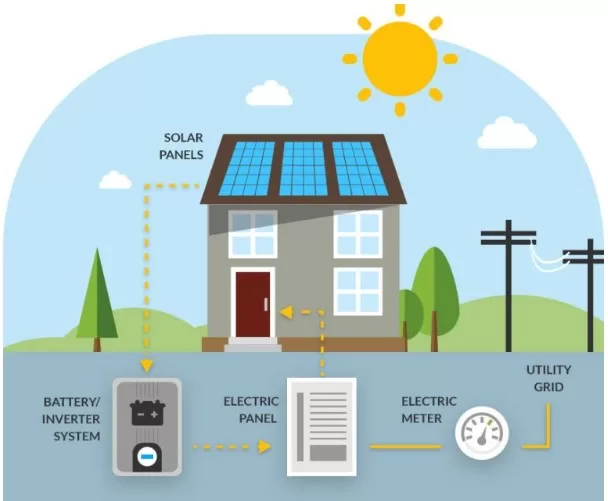Harnessing the power of the sun is no longer a dream, thanks to advancements in solar energy technology. In an effort to promote the adoption of solar panels, governments worldwide have introduced solar panel subsidies. But what are these subsidies, and how can you benefit from them? This article will provide an in-depth look at solar panel subsidies and their impact on the environment and economy.
The Importance of Solar Energy
Solar energy has gained popularity due to its various environmental and economic benefits. To better understand these advantages, let’s delve into each one:
Environmental benefits: Firstly, solar energy is a clean and renewable source of power that helps reduce greenhouse gas emissions and our reliance on fossil fuels. By adopting solar panels, we can combat climate change and preserve our planet for future generations.
Economic benefits: Secondly, solar energy can help reduce electricity bills and provide energy independence. Additionally, it promotes job growth in the renewable energy sector, fostering innovation and economic development.

Understanding Solar Panel Subsidies
Before diving into the specifics of solar panel subsidies, it’s essential to grasp what they are and the different types available.
- Definition: A solar panel subsidy is financial assistance provided by governments to reduce the cost of purchasing and installing solar panels. These subsidies can come in various forms, including tax credits, rebates, grants, and low-interest loans.
- Types of subsidies: There are two main types of solar panel subsidies: upfront incentives and ongoing incentives. Upfront incentives, like grants and rebates, help reduce the initial cost of solar panel installation, while ongoing incentives, such as feed-in tariffs and net metering, provide financial benefits over the system’s lifetime.
Global Solar Panel Subsidy Programs
Solar panel subsidies are not limited to one country or region. Here are a few examples of global subsidy programs:
- United States: The U.S. federal government offers a solar investment tax credit (ITC), which allows homeowners and businesses to deduct a percentage of the cost of installing solar panels from their federal taxes.
- European Union: EU countries have implemented various incentives, such as feed-in tariffs, tax credits, and grants, to promote solar energy adoption.
- India: India’s National Solar Mission provides subsidies to homeowners and businesses for solar panel installation, aiming to increase the country’s solar capacity.
- China: China offers various solar incentives, including feed-in tariffs and tax breaks, to encourage the adoption of solar power and reduce its reliance on fossil fuels.
How to Apply for Solar Panel Subsidies
Applying for solar panel subsidies can be a straightforward process if you follow these steps:
- Determine eligibility: First and foremost, research your local, regional, and national solar subsidy programs to determine your eligibility. Keep in mind that requirements may vary based on factors like location, income level, and property type.
- Research local programs: Next, investigate the solar panel subsidy programs available in your area. You can typically find this information on your local government’s website or by contacting your utility company. Be aware that some programs may have application deadlines or limited funding, so it’s crucial to stay informed.
- Gather necessary documentation: Lastly, be prepared to submit required documents, such as proof of income, property ownership, and energy usage, when applying for solar panel subsidies. It’s essential to have these documents ready to avoid delays in the application process.
Pros and Cons of Solar Panel Subsidies
Like any financial incentive, solar panel subsidies have their advantages and disadvantages:
- Advantages:
- Lower installation costs: Subsidies help reduce the upfront costs of solar panels, making them more accessible to a broader range of consumers.
- Increased adoption of solar energy: By lowering the barrier to entry, subsidies encourage more people to invest in solar power, leading to increased renewable energy capacity.
- Environmental and economic benefits: Increased solar power adoption contributes to a cleaner environment and fosters economic growth.
- Disadvantages:
- Limited funding: Subsidy programs often have limited funding, which may cause them to expire or change over time.
- Complexity: Navigating the application process and eligibility requirements can be challenging for some consumers.
- Potential for inefficiency: Subsidies may not always target the most cost-effective or efficient solar projects, potentially leading to a suboptimal allocation of resources.
Conclusion
Solar panel subsidies have undeniably played a critical role in promoting the adoption of solar energy worldwide. Thanks to these incentives, countless homeowners and businesses have been able to transition to clean, renewable energy, benefiting both the environment and the economy. By gaining a deeper understanding of the various types of subsidies available and skillfully navigating the application process, you too can take advantage of these programs and make a positive impact on our planet.
FAQs
What is a solar panel subsidy?
A solar panel subsidy is financial assistance provided by governments to reduce the cost of purchasing and installing solar panels.
What are the different types of solar panel subsidies?
Solar panel subsidies come in various forms, including tax credits, rebates, grants, and low-interest loans.
Are solar panel subsidies available worldwide?
Yes, many countries around the world offer solar panel subsidies to encourage the adoption of solar energy.
What are the advantages of solar panel subsidies?
Solar panel subsidies help lower installation costs, increase the adoption of solar energy, and contribute to environmental and economic benefits.
What are the disadvantages of solar panel subsidies?
Disadvantages include limited funding, complexity in navigating the application process, and potential inefficiency in resource allocation.